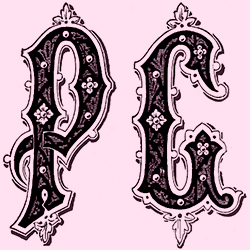In June 1880, Paddy Ryan defeated Joe Goss in West Virginia in a bare-knuckle fight and claimed the championship of America. But, prize fighting being illegal, there was no respected organization that could officially sanction this claim. So uncertainty about who was the American champion remained. John L. Sullivan then challenged Ryan, but Ryan did not immediately accept. He said West Virginia authorities were hunting him for participating in a prize fight and, besides, Sullivan had yet to post a forfeit. Enter Richard K. Fox and the National Police Gazette.
Fox offered to sanction and facilitate a match between Ryan and Sullivan. The April 16, 1881, issue of the Police Gazette explains: “To settle this matter, Richard K. Fox, proprietor of the POLICE GAZETTE, offers to match Sullivan, the Boston giant, to fight Paddy Ryan at catchweight, according to the new rules of the London prize ring, for $1,000 a side and the heavy-weight championship of America. He will also offer a champion belt—fac simile of the belt Heenan and Sayers fought for—to the winner. The trophy is to represent the championship of America, and the winner of the belt will have to defend the trophy, according to the rules that governed the champion belt of England. All matches for the belt to be made at the POLICE GAZETTE office, and Richard K. Fox is to be final stakeholder in all matches and to select a referee…. Richard K. Fox means business, and is eager and anxious to find out who is the champion pugilist of America.”
The same article also suggested the fight—and Ryan’s training camp—could be in Canada, so Ryan could avoid his legal problems. But when the fight did take place in February 1882, it was in rural Mississippi, though still illegal. John L. Sullivan won and the Police Gazette declared him American champion of all boxing. And thus began the Gazette‘s position as not just a sports magazine, but the premier boxing—as well as bare-knuckle boxing—sanctioning organization in America, later the world. The belt Fox had produced was made from 12.5 pounds of solid silver and gold with eight diamonds, including two in the eyes of a fox head. It remained the emblem of world boxing champions, both bare knuckle and gloved, until after the turn of the 20th century.
When gloved boxing became legal in 1892, the Police Gazette suspended the use of its championship belts as representing bare-knuckle (BKB) champions. Now, with BKB making a comeback, it was natural for us to reinstate the Police Gazette belt as the signifier of world BKB champions since the last time there was an official BKB world champion it was the Police Gazette that bestowed the title. In February 2016, we passed the management of this title to Scott Burt of the Bare Knuckle Boxing Hall of Fame in recognition of his immersion in the subject and the singular work he’s done in the field.
The new Police Gazette bare-knuckle champion belt, produced by the Bare Knuckle Boxing Hall of Fame, will be fought for November 17th between champion Bobby Gunn and challenger Shannon Ritch—the first time since July 1889 the Police Gazette heavyweight belt will be bestowed following a BKB match. Welcome back!
 The Police Gazette world-champion belt makes an appearance in the November 1, 1884, issue.
The Police Gazette world-champion belt makes an appearance in the November 1, 1884, issue.

